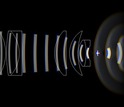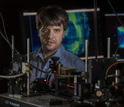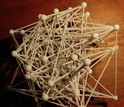News Release 17-069
NSF issues awards to advance a national research infrastructure for neuroscience
NeuroNex projects will develop new tools, partnerships to understand the brain

Cornell University's Joseph Fetcho will work to develop a noninvasive recording of neural activity.
August 1, 2017
This material is available primarily for archival purposes. Telephone numbers or other contact information may be out of date; please see current contact information at media contacts.
The National Science Foundation (NSF) has made 17 Next Generation Networks for Neuroscience (NeuroNex) awards to aid the research community as it pursues one of its grandest challenges: understanding the brain.
These projects will support the development of innovative, accessible and shared capabilities and resources, as well as theoretical frameworks and computational modeling to advance neuroscience research.
NSF's NeuroNex awards will bring together researchers across disciplines with new technologies and approaches, yielding novel ways to tackle the mysteries of the brain. Befitting its multidisciplinary approach to research, the NeuroNex program involves participation from multiple NSF directorates. The overall goal of this activity is to establish a coherent national infrastructure to enhance our understanding of brain function across organizational levels and a diversity of species.
"Through the development of advanced instrumentation to observe and model the brain, we're closer to our goal of building a more complete knowledge base about how neural activity produces behavior," said Jim Olds, NSF assistant director for Biological Sciences. "NeuroNex seeks to take that progress forward, by creating an ecosystem of new tools, resources, and theories. Most importantly, NeuroNex aims to ensure their broad dissemination to the neuroscience community. With these awards, NSF is building a foundation for the next generation of research into the brain."
NeuroNex is one element of Understanding the Brain, NSF's multi-year effort to enable a scientific understanding of the full complexity of the brain. Through Understanding the Brain, NSF participates in the national Brain Research through Advancing Innovative Neurotechnologies (BRAIN) Initiative, an alliance of federal agencies and other partners seeking to enhance our understanding of the brain.
Nine of the new awards are for NeuroNex Neurotechnology Hubs, which will focus on the development, refinement and dissemination of innovative neurotechnologies. These hubs will provide:
- Novel transgenic and molecular approaches to measure and manipulate circuit activity.
- Novel instrumentation and genetic approaches for imaging structure and dynamics of neural circuits.
- New materials and devices for large-scale electrical recordings of neural activity.
Two of the awards are for NeuroNex Theory Teams, which will advance theoretical and computational frameworks for understanding the brain. Both of the awarded teams will focus on developing novel conceptual tools to decipher how the structure and dynamics of neurons give rise to behavior. The teams will work in concert with the Neurotechnology Hubs. Each of these eleven awards is for up to $2 million per year, for up to five years.
In addition, NSF issued six smaller NeuroNex Innovation awards, focused on developing potentially revolutionary, early-stage tools that can be integrated with other NeuroNex projects. All NeuroNex awards will also support workforce training opportunities. The complementary nature of the technologies and the mutual synergies between the technologies and the theories hold the promise of ushering in new ways of conducting neuroscience research.
The award titles, principal investigators and sponsor institutions are listed below.
NeuroNex Neurotechnology Hub awards:
- Optical technologies for large scale, noninvasive recording of neural activity: Chris Xu, Cornell University
- Live imaging of the C. elegans connectome: Oliver Hobert, Columbia University
- Miniaturized open source devices for calcium imaging, electrophysiology and real-time control of neural activity: Peyman Golshani, University of California, Los Angeles
- Integrated circuit cracking (ICC) with linked tools for diverse systems: Karl A. Deisseroth, Stanford University
- Advancing neuronal and genetic approaches to animal behavior research: Yehuda Ben-Shahar, Washington University
- Multimodal Integrated Neural Technologies (MINT) - Connecting physiology to functional mapping: Euisik Yoon, University of Michigan Ann Arbor
- Nemonic: Next generation multiphoton neuroimaging consortium: Spencer Smith, University of North Carolina at Chapel Hill
- Bioluminescence for optimal brain control and imaging: Christopher Moore, Brown University
- Enhanced resolution for 3DEM analysis of synapses across brain regions and taxa: Kristen Harris, University of Texas at Austin
NeuroNex Theory Teams awards:
- Columbia University theoretical neuroscience center: Laurence F. Abbott, Columbia University
- Inferring interactions between neurons, stimuli and behavior: Kresimir Josic, University of Houston
NeuroNex Innovation awards:
- Southwest Magnetogenetics Project (SoMa): Jacob Robinson, Rice University
- Towards automatic analysis of multi-terabyte cleared brains: Joshua Vogelstein, Johns Hopkins University
- A national resource for mesoscale and connectomic brain mapping: Narayanan (Bobby) Kasthuri, University of Chicago
- Behavioral technologies: Adam Kepecs, Cold Spring Harbor Laboratory
- Chemical and genetic methods to measure and manipulate neurons with light: Evan Miller, University of California, Berkeley
- Voltage to Light Transducers (VoLT) collaborative: Francois St-Pierre, Baylor College of Medicine
-NSF-
-
Blood cell reconstructions from University of Texas at Austin researcher Kristen M. Harris.
Credit and Larger Version -
Cornell University's Chris Xu studies how brains produce behavior in a range of species.
Credit and Larger Version -
Image from the lab of Spencer Smith, who will study next-generation multiphoton neuroimaging.
Credit and Larger Version -
Karl Deisseroth, professor of bioengineering, in his lab at Stanford University.
Credit and Larger Version -
An abstract 3-D model of connected neurons, sculpted by neuroscientist Xaq Pitkow.
Credit and Larger Version
Media Contacts
Sarah Bates, NSF, (703) 292-7738, email: sabates@nsf.gov
Rob Margetta, NSF, (703) 292-2663, email: rmargett@nsf.gov
The U.S. National Science Foundation propels the nation forward by advancing fundamental research in all fields of science and engineering. NSF supports research and people by providing facilities, instruments and funding to support their ingenuity and sustain the U.S. as a global leader in research and innovation. With a fiscal year 2023 budget of $9.5 billion, NSF funds reach all 50 states through grants to nearly 2,000 colleges, universities and institutions. Each year, NSF receives more than 40,000 competitive proposals and makes about 11,000 new awards. Those awards include support for cooperative research with industry, Arctic and Antarctic research and operations, and U.S. participation in international scientific efforts.
Connect with us online
NSF website: nsf.gov
NSF News: nsf.gov/news
For News Media: nsf.gov/news/newsroom
Statistics: nsf.gov/statistics/
Awards database: nsf.gov/awardsearch/
Follow us on social
Twitter: twitter.com/NSF
Facebook: facebook.com/US.NSF
Instagram: instagram.com/nsfgov





